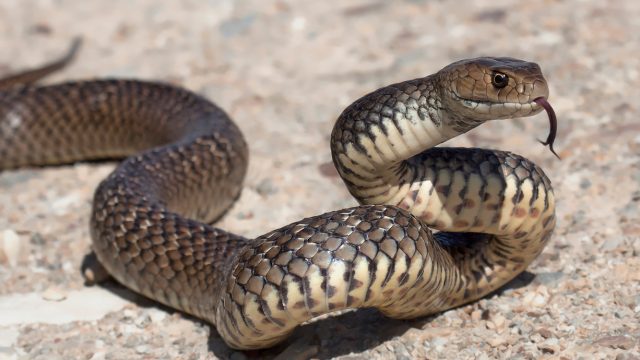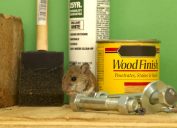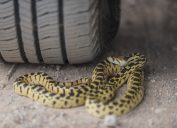The No. 1 Sign There's a Snake in Your Garage
Here's how you can tell a reptile has made its way into your vehicle's covered parking space.
Even though they're designed to house your vehicle, anyone whose home has a garage knows practically anything can go inside them. Whether it's a semi-outdoor pet residence, a makeshift home gym, or an overflow storage area, they can be a relatively versatile space. But in some cases, some things you may not want in your garage can end up in there anyway—including certain pests and animals. Read on to see how you can tell a snake has made itself comfortable in your garage.
READ THIS NEXT: Growing This in Your Yard Is Inviting Snakes to Your Home.
Certain habits or items might be attracting snakes into your garage in the first place.
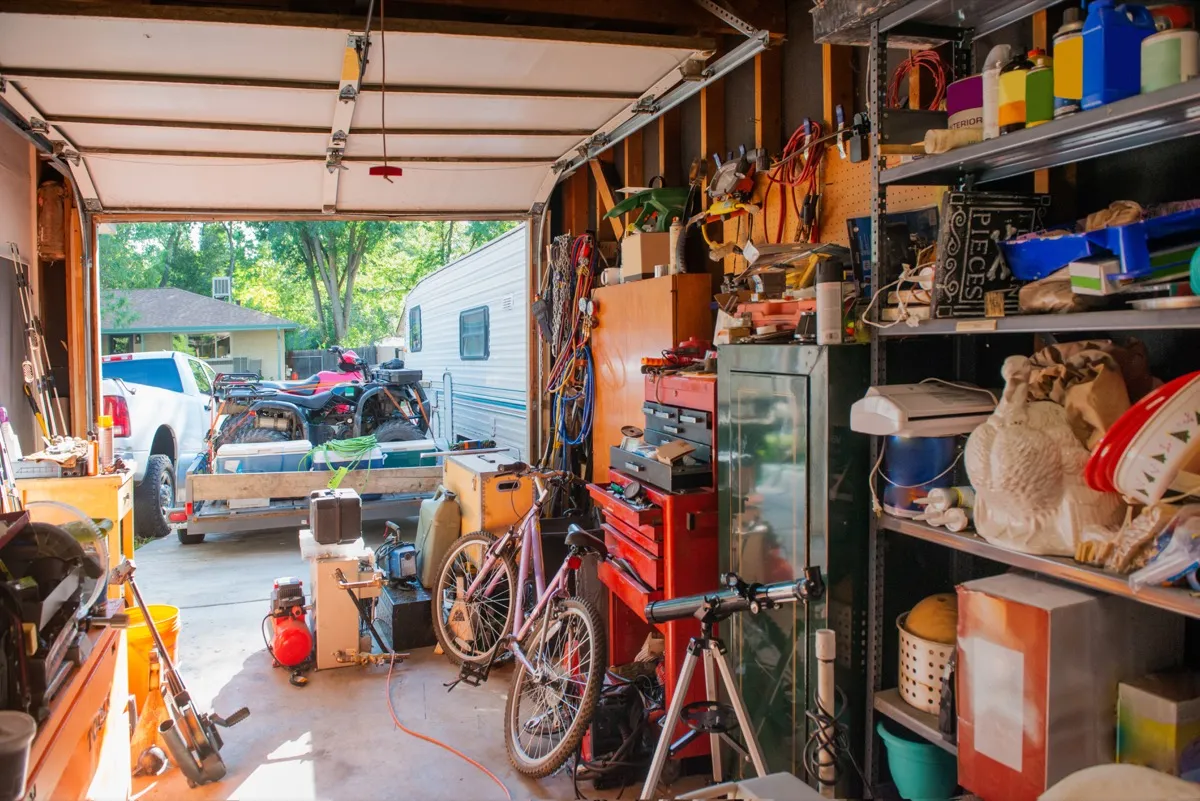
Just like basements and attics, no two garages are ever exactly alike. But when it comes to how you choose to use that extra room, there are certain things that make them a particularly attractive environment to snakes who find their way in from the outside world.
According to Home Efficiency Guide, the layout and environment of your garage can have a significant effect on how attractive it is to reptiles. As cold-blooded animals, snakes often seek out a heat source as the weather gets colder. Garages heated with space heaters or house water heaters will be particularly attractive to snakes, especially as they can also give them a place to hide. Coincidentally, the same can go for extreme heat: Snakes looking to cool off will naturally gravitate towards the shaded, relatively chilly concrete your garage provides.
You might also want to pay attention to any activity surrounding your house. Nearby construction or lot clearing can disturb entire ecosystems, forcing snakes and the small rodents and reptiles they feed upon to take shelter elsewhere. If you notice an increase of small animals on your property as work is beginning nearby, it can be a good reason to stay on the lookout for snakes in your garage, Home Efficiency Guide says.
Finding one particular clue can be the sign that a snake has made its way into your garage.
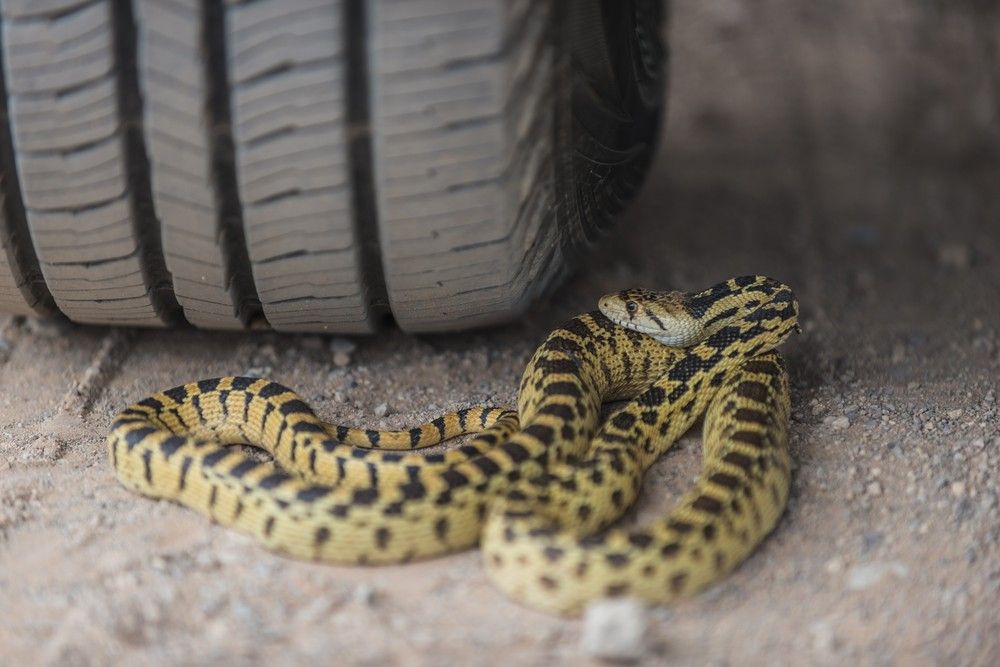
Unlike other homes in your house where snakes can take up residence, garages offer something slightly different when it comes to detecting them before you actually come across one. Despite being infamously legless animals, snakes can still leave trails in the dust or dirt that may have accumulated on the ground in that area or create tracks when they drag it in from outside.
"Because most snakes move in a very unique and distinct way, it actually makes them a bit easier to identify their trails and where they've been traveling," Burns Blackwell, owner of Terminix Triad in North Carolina, tells Best Life. He advises looking out for a side-winding pattern in the dust the reptiles make as they slither across the ground, especially along walls and under cars or appliances.
RELATED: For more up-to-date information, sign up for our daily newsletter.
Snakes can leave more obvious signs of their presence, too.
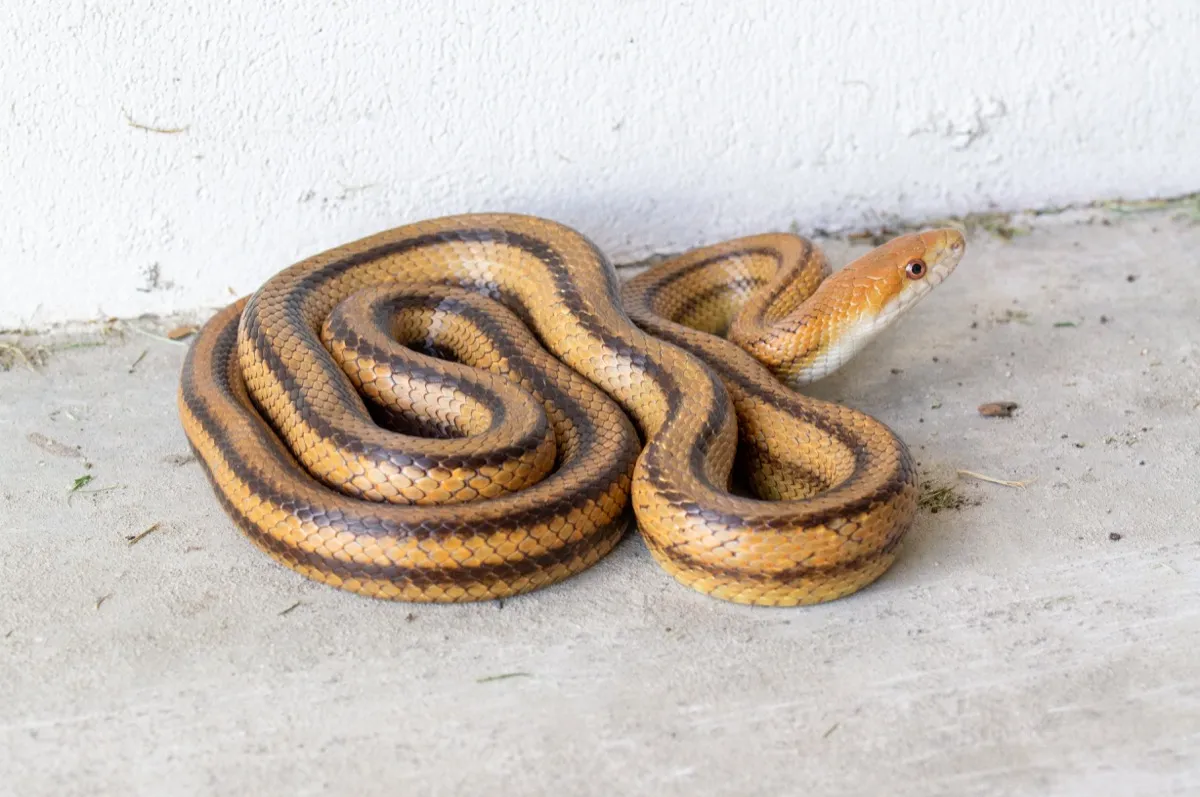
Even if your garage is squeaky clean without a speck of dust on the ground, snakes can leave behind other clues to their presence similar to any other animal: Droppings. According to Home Efficiency Guide, snake feces can typically look like bird droppings as they're black and white in color, small, and usually wet. In some cases, they can include traces of their prey, such as bones or fur.
And there's also one warning sign unique to the slithering reptiles. "A common sign that you have a snake infestation is finding snakeskin around your property," Toby Cahoon from B&T Pest Control tells Best Life. "They shed their skin as they grow, so finding old skin around is a good sign that they're currently living [nearby]."
Here's how you can avoid attracting unwanted snakes into your garage.

When it comes to keeping pests out of the main living area of your home, most experts suggest sealing up any small holes or crevices to make sure they can't find their way inside. Unfortunately, garages provide the challenge of having the largest opening to the outdoors in your home by design, big enough for massive vehicles and heavy equipment to pass through, let alone snakes. According to Garage Transformed, the easiest way to avoid any slithering intruders is to keep your garage door down when you're not using it and make sure it seals flush with the ground at the bottom. Readjust your door's run length or add a door sweep to close it up if you notice a gap.
And just as snakes are attracted to the warmth and coolness of your garage, they're also always on the lookout for their next meal. Keeping rodents out is one of the easiest ways to avoid drawing in the reptiles, which can be easier to achieve if you avoid storing certain items such as pet food in your garage.
"Snakes do not like cat or dog food, but these foods usually attract rodents, and a snake's primary diet consists of eating mice and rats," Aqsa Tabassam, a gardener and landscaper with more than ten years of experience, previously told Best Life. "So, leaving out cat and dog food triggers this chain reaction where your garage might be infested by rodents and then snakes, as they look to find food for themselves."
READ THIS NEXT: 5 Cleaning Habits That Attract Snakes.
